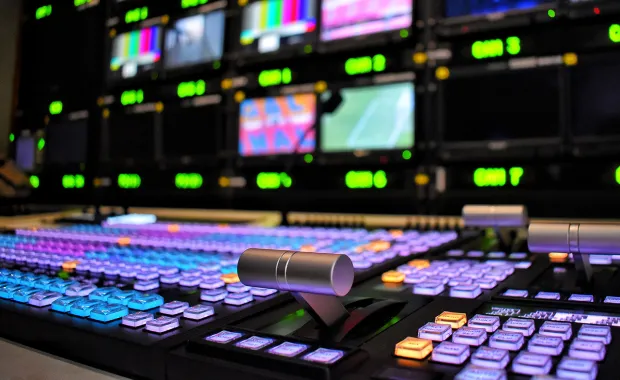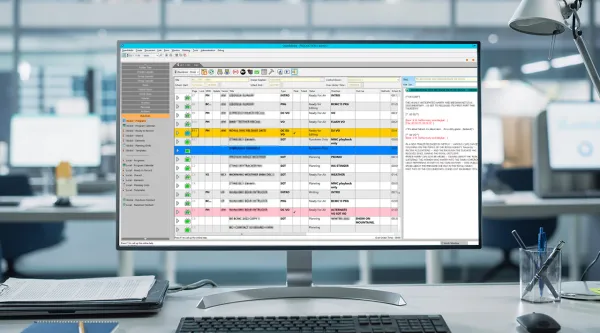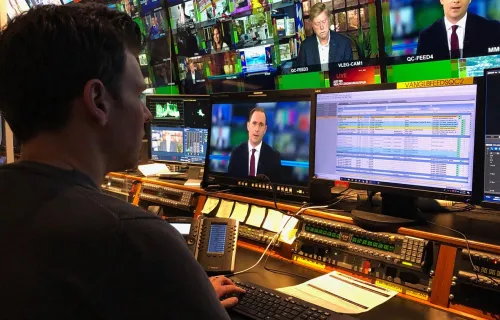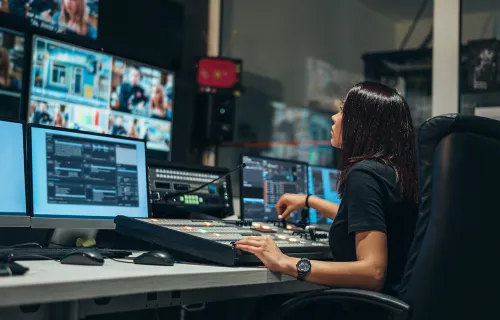Enabling end-to-end communication
In an effort to replace its aging line scheduling and file transfer network and enable it to exchange audio contributions and switch audio lines between broadcasting stations, ARD, a joint organization of Germany's regional public-service broadcasters, worked with IRT (Institut für Rundfunktechnik), CGI and other organizations to develop the weConnect system.
Using its own protocol language SML (Story Markup Language), weConnect acts as an interface to production and line scheduling systems, as well as a complete, fail-safe transmission network. weConnect allows participating broadcasters Deutschlandradio, Deutsche Welle, ARD Hauptstadtstudio and ARD Sternpunkt, as well as external broadcasters including ORF, SRF and EBU, to exchange multimedia contributions such as audio files, videos, images or texts, as well as to organize live broadcasts via line.
“At the beginning of the project, there was the desire to simplify work processes—you have to bear in mind that the management-based exchange of contributions was based on ideas from the 1970s and the file-related exchange was already over 20 years old—you wanted something modern,” explains an ARD spokesperson.
weConnect gateways from CGI (11 gateway locations) and D’Accord (2 gateway locations), are available redundantly for each broadcasting station and act as central sending and receiving points in the ARD network. Based on the weConnect gateways, specially developed adapters provide the connected scheduling, editorial, and production systems with the processed information.
Building the weConnect story
Objects exchanged between the participating broadcasters via weConnect are SML-based stories, containers for metadata, references to and descriptions of media essences, and booking information. The weConnect network consists of interconnected weConnect gateways. Behind each gateway, local end systems are connected, which prepare the information contained in the stories for the respective applications. An end system can be a scheduling system, but also an editorial or production system.
“The updated function for contributions by a story owner is classified as still unusual, but very exciting. If they change the story, this is communicated to all systems in the same second. Other options such as sending multimedia attachments should be mentioned at this point too. You can send posts with three questions as text, three answers in an audio format and also attach photos and videos to the story afterwards,” says the ARD spokesperson. These new possibilities are currently still being discovered and tested.
Successfully launching the weConnect Network
weConnect was launched in December 2020, despite numerous challenges posed by the COVID-19 pandemic. ARD.ZDF media academy developed extensive, virtual training that was instrumental to the successful launch.
“A new system naturally has more options and, as expected, is based on modern standard IT. Multimedia articles can be distributed updated and distributed faster with weConnect. The technical implementation has succeeded more economically than ever before,” says ARD.
Interface for dira production system
For CGI dira radio solutions clients among the broadcasting companies, an additional interface to their dira production system was created. Editorial systems are currently not connected to weConnect according to specifications. However, CGI OpenMedia newsroom system can both send and receive story information via dira.





